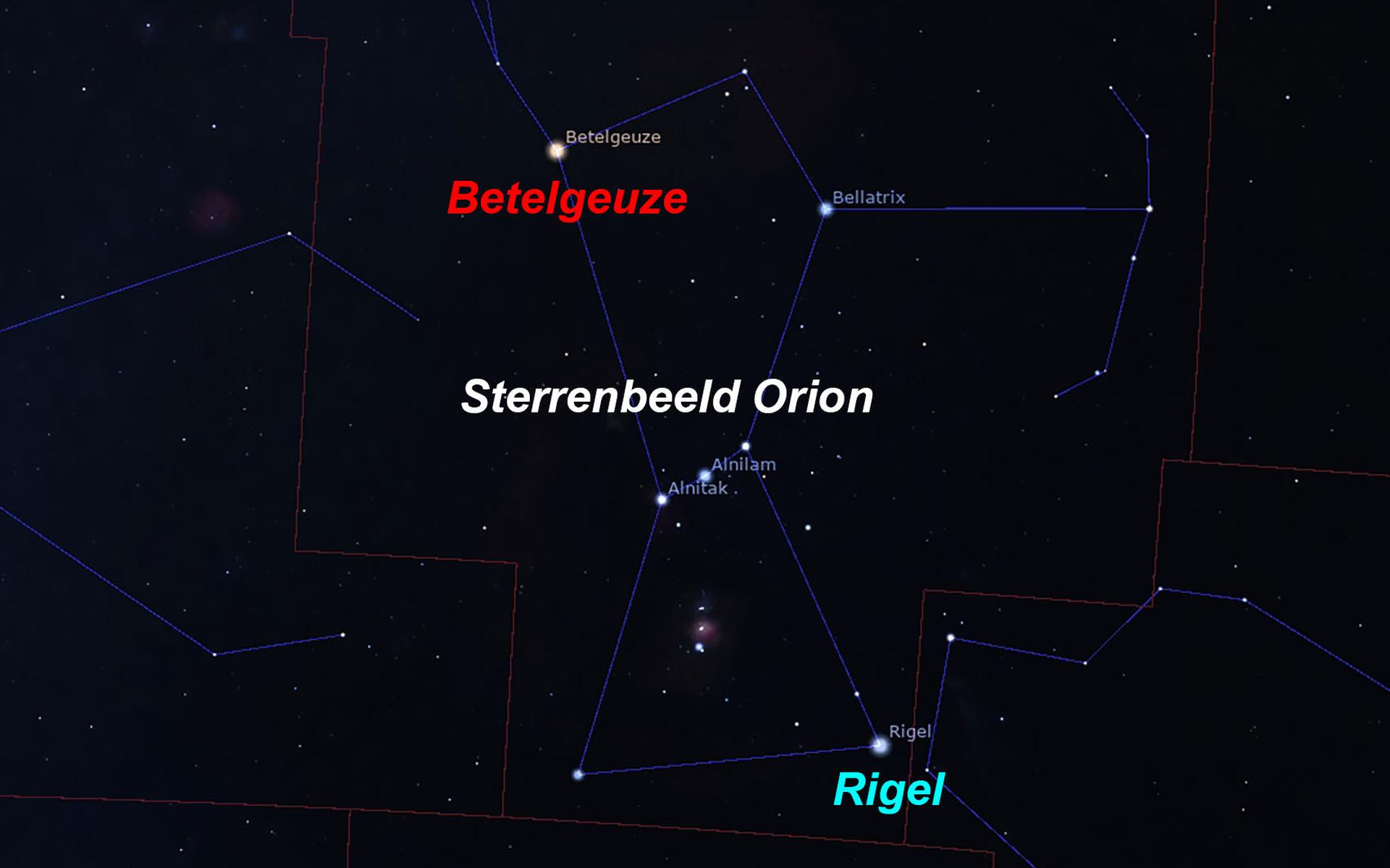The bright red giant Betelgeuse, a star at the upper left of the Orion constellation, continues to amaze. It is tentatively predicted that the star will explode and go supernova in the not too distant future.
Several brightness changes at this star, which has been closely studied for centuries, could be caused by a small companion star that has never been seen. This companion is nicknamed ‘Betel Buddy’. The small companion regularly sweeps dust around Betelgeuse, temporarily making the giant star appear brighter. That dust collects elsewhere, which may temporarily dim Betelgeuse’s brightness because the dust blocks light.
However, Betelgeuse itself is also a variable star. By running computer models of a star like Betelgeuse, in which some of the brightness variations seen in Betelgeuse did not occur, the presence of a small companion to Betelgeuse is considered more likely. Betelgeuse is about 24 solar masses and a hundred thousand times brighter than our parent star. Betelbuddy, however, would be at most 2 solar masses and (now) invisible due to its proximity to the true bright giant.
In the sky this week you will see:
Sun and Moon Times (Saturday, November 2)
Sunrise: 7:36 a.m.; under 5:04 p.m.
Moon at: 8:53 am; under 4:55 p.m.
Moon – We don’t see much of the moon. On Friday, November 1, the New Moon (invisible Libra, astrology) is at 1:48 p.m. A few days later the moon appears low in the southwest evening sky.
Planets – Shortly after sunset, Venus can be seen very low in the southwest. At the same time, Saturn (lower) is in the southeast. During the night, Jupiter and Mars can be seen (both from the east, coming up). Jupiter and Mars will appear later in the northeast from 6:55 p.m.
Comet Tsuchinshan-Atlas – The comet has already lost much of its brightness. It can only be seen in the constellation The Snake Bearer with good binoculars or a telescope. The coverage of this fast comet ends here.
Meteors – The Orionid meteor shower is rapidly decreasing in activity. Only a few meteors occur each time. They now seem to come from somewhere in the constellation Gemini.
More information: RP Elings, tel. 0527-699142 / 06-51931417; email: [email protected]
2024-10-30 10:27:00
#Heaven #polder #October #November


